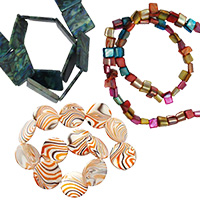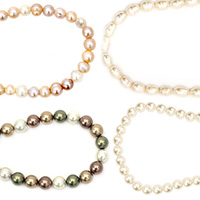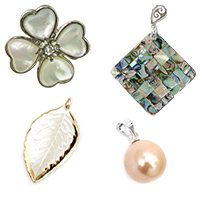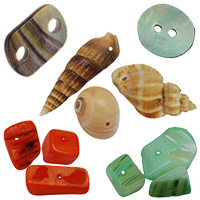Natural Pearls & Mother of Pearl

String of Natural MOTHER OF PEARL Shell Chip Beads, Colored: Assorted, 5-10 mm ~ 85 cm

Mother-of-pearl pendant coin, 30 mm white - 2 pieces

Mother-of-pearl pendant, rhombus 25 mm, white - 2 pieces
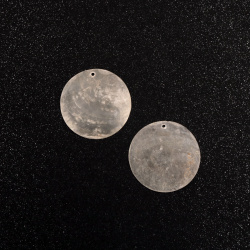
Mother-of-pearl pendant coin, 40 mm, white - 2 pieces
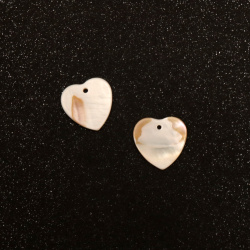
Mother-of-pearl Heart Shaped Pendant / 20 mm / White - 2 pieces
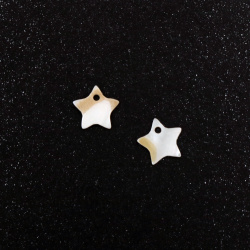
Mother-of-pearl pendant, star, 12~15 mm, white - 2 pieces
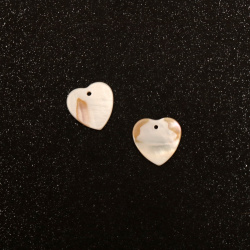
Mother-of-pearl Heart Shaped Pendant / 15 mm / White - 2 pieces
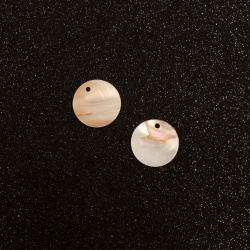
Mother-of-pearl Coin Shaped Pendant for DIY Jewelry Making, Home Decor, etc. / 15 mm / White - 2 pieces
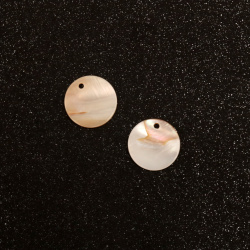
Mother-of-pearl Coin Shaped Pendant for Jewelry, Accessories and Embellishments / 20 mm / White - 2 pieces
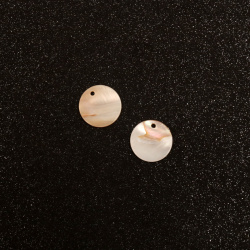
Mother-of-pearl Coin Shaped Pendant / 10 mm / White - 2 pieces
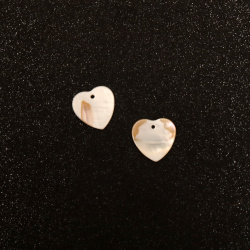
Mother-of-pearl Heart Shaped Pendant / 10 mm / White - 2 pieces
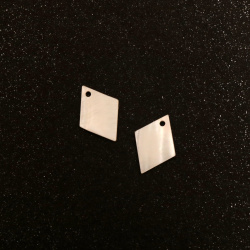
Mother-of-pearl pendant, rhombus, 20 mm white - 2 pieces
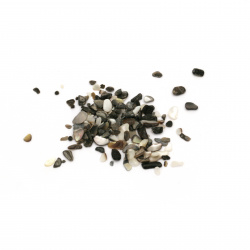
Natural Pieces of Shells without Hole for Decoration, 1 ~ 10x1 ~ 4x0.5 ~ 2 mm - 20 grams
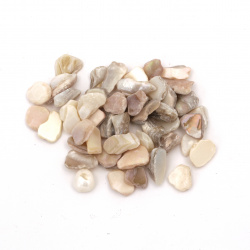
Natural Seashells Chips for Decoration, 6 ~ 13x4 ~ 9x0.1 ~ 6 mm, MIX - 50 grams
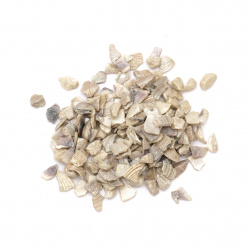
Natural Seashells Chips with a Pearl Effect, 2 ~ 4 mm, 330 ml ~ 400 grams
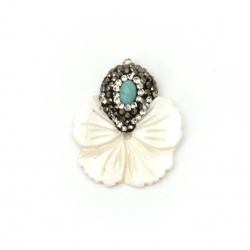
Pendant mother of pearl flower with polymer, crystals and turquoise 28x25x3 mm hole 1 mm
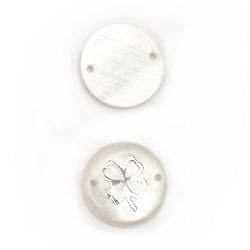
Connector mother-of-pearl round 20x3~3.5 hole 1 mm with clover white - 5 pieces
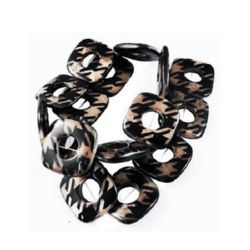
Strand of Painted Mother of Pearl Beads, Square, 24x4 mm, 1 mm Hole, ~16 pieces
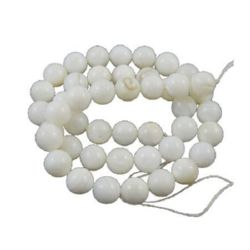
Strand of Mother of Pearl Beads, Round, 7 mm, 1 mm Hole, Cream Color, ~53~55 pieces

String mother-of-pearl 5-10 mm hole 1 mm colored chips ~ 80 cm
The Elegance of Natural Pearls and Mother of Pearl
What is a Pearl?
A pearl is a hard, lustrous object that forms within the soft tissue of a living shelled mollusk. Like the shell of a mollusk, a pearl is composed of calcium carbonate in a crystalline form, deposited in concentric layers. The ideal pearl is perfectly round and smooth, but many other shapes, known as baroque pearls, can occur.
For centuries, the highest quality natural pearls have been valued like precious gems. This has made the pearl a metaphor for something rare, fine and valuable.
The most valuable pearls occur randomly in the wild and are extremely rare. These wild pearls are called natural pearls. Cultured or farmed pearl oysters and freshwater mussels, however, produce the majority of pearls currently sold.
Imitation pearls are also widely sold, but they are easy to distinguish from genuine pearls because of their poor iridescence quality. Pearls are harvested and cultivated primarily to use for jewelry making, but in the past, they were also used to adorn clothing. Other notable uses of pearls are in cosmetics, medicines, and paint formulations.
Natural Pearls
Natural pearls are almost 100% calcium carbonate and conchiolin. They are thought to form under accidental conditions when a microscopic intruder or parasite enters a bivalve mollusk and settles inside the shell.
To protect itself from the intruder, the mollusk forms a pearl sac from mantle tissue cells and secretes calcium carbonate and conchiolin to cover the irritant. This process of secretion is repeated many times, producing a pearl. Natural pearls come in many shapes, with perfectly round ones being relatively rare.
Typically, a natural pearl’s accumulation consists of a brown central zone, formed of columnar calcium carbonate, and a yellowish to white outer zone, composed of nacre. These two distinct materials can be observed in pearl section. The presence of columnar calcium carbonate, rich in organic material, indicates juvenile mantle tissue, formed during the early stage of pearl development.
Perhaps the most beloved gemstones of all time, pearls—both natural and modern cultured pearls—come in a wide variety of colors. The most familiar colors are white and cream (a light yellowish-brown). Black, gray, and silver are also quite common, but the pearl color palette doesn’t stop there.
The main color is often modified by secondary colors, called overtones, which are usually pink, green, purple or blue. Some pearls also exhibit an orient color, the iridescent rainbow-like sheen caused by light diffraction through the nacre layers.
Cultured Pearls
The growth of cultured pearls requires human intervention and care. Today, most mollusks used in the culturing process are specifically farmed for this purpose, although some wild mollusks are still harvested and used.
To initiate the process, a skilled technician takes mantle tissue from a sacrificial mollusk of the same species and inserts shell beads along with a small piece of mantle tissue into the reproductive organ of the host mollusk.
If a bead is used, the mantle tissue grows and forms a sac around it, secreting nacre inwards and onto the bead to form a cultured pearl. If no bead is used, nacre forms around the individual implanted pieces of mantle tissue. Workers nurture the mollusks until the cultured pearls are harvested.
Cultured pearls are used for:
- Necklaces and bead bracelets or are set in solitaires
- Pairs or clusters for use in earrings
- Rings
- Pendants
Larger pearls with unusual shapes are popular with creative jewelry designers.
Types of Cultured Pearls
Akoya Cultured Pearls
Akoya cultured pearls are well-known to people in the U.S. and the West. Many customers think that white or cream Akoya pearls are the classic pearl used in jewelry. Japan and China also produce Akoya cultured pearls.
South Sea Cultured Pearls
Australia, Indonesia, and the Philippines are leading sources of these saltwater-cultured pearls. South Sea cultured pearls can be white to silver or golden, depending on the type of oyster. Their large size is due to their long growth period, and their limited critical growing conditions contribute to their value.
Tahitian Cultured Pearls
These pearls are cultured primarily around the islands of French Polynesia (the most familiar of which is Tahiti). These pearls are born in saltwater. They possess a wide color range, appearing gray, black, or brown, with blue, green, purple, or pink overtones.
Freshwater Cultured Pearls
Freshwater cultured pearls are the most commonly produced and the most popular types of pearls. This is due to their remarkable range of sizes, shapes and colors, and their wide availability and lower price. They are usually cultured in freshwater lakes, often with many pearls grown in one oyster. China is the leading source of freshwater cultured pearls.
Interesting Facts About Pearls
1. Pearls are the only natural gemstone that comes from a living organism
Although pearls are still considered precious gems, they are hard to compare to rubies or diamonds. Pearls are the only precious gems from living creatures, while all others are found under the earth’s crust. Oyster shells produce nacre, which is why they are used to create various accessories.
2. Natural pearls are among the rarest jewels in the world
Natural pearls, formed in oysters, and not those grown in a lab, are extremely rare precious gems. On average, less than 1 in every 10,000 wild oysters contains pearls. The entire wild oyster population also remains affected by overfishing, further increasing the rarity associated with natural pearls.
3. It is believed that only 1% of pearls used in jewelry are natural
Approximately 99% of pearls currently available are considered cultured rather than from a natural source. Kokichi Mikimoto successfully created the first cultured pearl in 1896, leading to a trend that met the demand for pearls by providing a more environmentally sustainable solution for obtaining them.
Rather than relying on excessive fishing to obtain rare and thus expensive natural pearls, cultured pearls gradually became more popular as a cost-effective alternative to real ones.
4. The most expensive pearl in the world is valued at $100 million
It had been stored under the owner’s bed for almost a decade. After the house burned down, a fisherman found the pearl off the Philippines coast. The pearl’s astonishing valuation is due to it being the largest pearl ever known to exist, measuring 26 inches in length and weighing over 5 stones.
5. According to Julius Caesar, only aristocrats could wear pearls
In 1 B.C., Julius Caesar established a law stating that only the rulers of Ancient Rome had the right to wear pearls. This is because in Ancient Rome, pearls were seen as a strong indication of social class. They were considered symbols of wealth and prestige, and as such, Caesar wanted to ensure they were reserved only for those of the highest class.
6. The first pearls date back over 7,500 years
In 2012, French researchers discovered what is believed to be the oldest pearl in the world. Found in a cemetery in the United Arab Emirates, scientists determined using carbon dating that the gem is more than 7,500 years old.
7. There are four main types of pearls
- The most widely available and perhaps best-known type of pearl is the freshwater pearl. It is primarily farmed in large water sources in China. Because it is not as rare as its counterparts, it is the cheapest one.
- However, the Japanese Akoya pearl, which is a variation of saltwater pearls, is also sometimes considered the most established one. Despite its name, it is found in both Japanese and Chinese waters. It is known for its uniquely beautiful luster and wonderful spherical shapes.
- Tahitian pearls, farmed on the islands of French Polynesia, are another type of saltwater pearls. Although they may be called black pearls, they also come in lovely shades of gray, purple, blue and green.
- Lastly, South Sea pearls, found in Australian waters and the Philippines, are the largest available pearls. They are typically available in white, cream or golden hues.
8. Pearl diving is much more dangerous
Professional diving is now subject to strict rules and regulations to improve the safety of all divers, including pearl divers. Pearl divers often risk falling victim to shark attacks. According to National Geographic, in the late 19th and early 20th centuries, the mortality rate of divers was believed to be an astonishing 50%.
9. Pearls are one of the birthstones for June
Blessed with three gemstones, those born in June can embrace the precious pearl as one of their official birthstones. In addition to its classic beauty, pearls have long been considered symbols of loyalty and purity, making this gemstone an ideal gift for a friend or relative.
What is Mother of Pearl?
Mother of pearl is the iridescent inner lining of a mollusk shell. It is most commonly found in three types of mollusks:
- Pearl oysters
- Freshwater mussels
- Abalone
To protect the interior of their shells from parasites and foreign irritants, the mollusk covers them with nacre - an organic substance that gives a reflective effect. The many iridescent colors of mother of pearl are due to the way light reflects off the layers of nacre on the shell.
How is Mother of Pearl Different from Pearls?
Both mother of pearl and pearls are made from the same material, but mother of pearl specifically refers to the nacre-covered inner shell of a mollusk. On the other hand, pearls are entirely made of nacre.
Difference in Supply and Availability
Aside from the difference in composition, mother of pearls and pearls differ in supply and availability. Compared to mother of pearls, pearls are much rarer. While most mollusks produce nacre, the same cannot be said for pearl gemstones. Only a very small percentage of mollusks produce pearls.
Most mollusks can produce nacre, while only a few can create gemstone-quality pearls.
Mother of Pearl vs. Pearl
Pearl is also made up of nacre. When a pearl is formed, a layer of nacre is deposited around a tiny particle that gets into the mollusk, either naturally or inserted by humans. Eventually, this pearl builds up around the small object and becomes a pearl. Though made of nacre, this outer coating of a pearl is not called mother of pearl.
How to Clean Mother of Pearls and Pearls?
To clean mother of pearls, use a lint-free cloth. Dampen the cloth for more effective cleaning. If you need deeper cleaning, use a jewelry cleaner recommended for pearl jewelry or mild soap and warm water.
If necessary, take the jewelry to a professional for thorough cleaning.
What to Avoid?
- Avoid harsh cleaners or abrasives as they can damage the gemstone’s surface and cause scratches.
- Avoid using ultrasonic cleaners, as mother of pearl is too soft for these machines and could be damaged.
- Do not use ammonia or baking soda to clean mother of pearl.
- Avoid contact with cosmetics, hairspray, and perfumes. Always put on jewelry last after everything else.
- Do not wear mother of pearl jewelry while engaging in sports or water-related activities such as swimming.
Storing Mother of Pearl
Mother of pearl jewelry and pearls can easily get scratched, so store them separately. Place them in a separate box to protect them from moisture and excessive sunlight.
What Do We Offer?
We offer a wide range of natural pearls and mother of pearls, including; mother of pearl pendants, natural pearls, strands, and mother of pearl shells, which you can use to create beautiful jewelry. Use some of our accessories to complement your creations or make a beautiful gift for a friend or relative.

